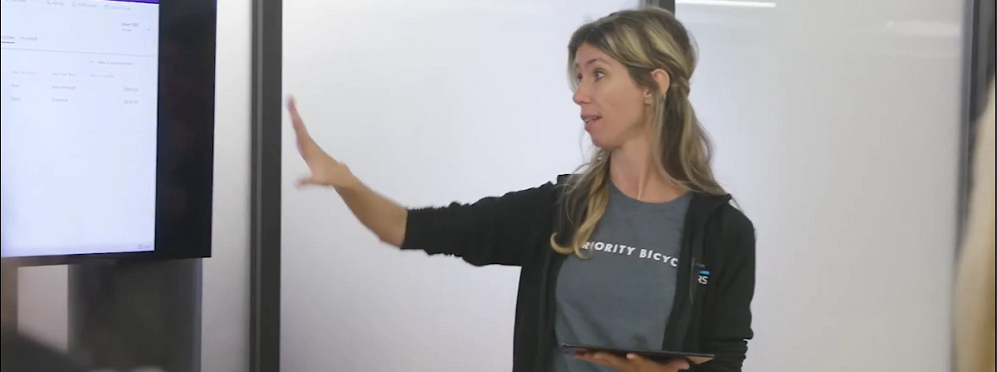Copilot for Dynamics 365 Customer Service

I am sure you have heard all about Microsoft’s new AI capabilities called ‘Copilot’ that is coming to other Microsoft software besides Dynamics 365! In a previous article I discussed some of the Viva Sales Copilot features like the ability to have AI create email responses for customers based on Dynamics 365 data and Microsoft 365 data. (If you haven’t read the article or seen the video you can do that here.) There is so much more coming in the next couple of months! Have you heard yet about Copilot for Dynamics 365 Customer Insights where marketers will be able to just ask the application for certain parameters in natural language which Copilot will use to very quickly create segments from their data? Copilot will even give segment suggestions that might not even have been considered to this point! Copilot in Dynamics 365 Marketing can help put together content for a new marketing email campaign, using the organization’s existing marketing emails, and outside sources if needed! WOW! I haven’t even touched on Copilot in Business Central, where Copilot will make the creation of products a lot easier! And what about Microsoft products like Word, PowerPoint, etc? Too much to mention!
How does it work?
In this article I am going to discuss the new Copilot functionality for Dynamics 365 Customer Service. At the time I am writing this article, the feature is planned to go into public preview of May 2023. Which means this is when you will be able to get your hands on it and to test it out!
I was lucky enough to get early access, so I have been able to play around with it a bit, and I am going to tell you all about it! Unfortunately I won’t go into the details of setup, because this process will most likely be very different at the time that Copilot goes into public preview. What I can tell you, is that when I installed the solutions and did the setup, it was quick! I was able to do this in under an hour. The way Copilot works is that it looks at data from sources that can live inside or outside of Dynamics 365 (Dataverse). Besides allowing Copilot to utilize existing Dynamics 365 knowledge articles, I was also able to point it to a few (company) websites. When Copilot is engaged, it uses AI to generate responses in natural language using the data sources I just mentioned. In my environment I focused on HVAC issues, so I have added several HVAC type knowledge articles and I pointed it to a fairly well known HVAC company website. The main reason I used their website is because they have a lot of content on their website!
There are two different areas where agents can utilize Copilot in Dynamics 365 Customer Service. The first area has two ways to use Copilot, and the second way is very similar to what you’re seen in Copilot for Viva Sales. (I am talking about the suggested email replies functionality.)
Asking questions
Let’s start at the beginning. When an agent logs into the Customer Service Workspace, they will see the Copilot (preview) pane on the right side of the screen. You’ll notice two tabs on the top of the Copilot pane. The first tab reads ‘Ask a question’ and the second tab reads ‘Write an email’. If you enter a question while on the ‘ask a question’ pane, Copilot generates an answer your question. The pane also shows a few examples you can try Example: “What’s the shipping status of order CAB123?” or “Draft a response from our discussion and include all options.” which would make it seem Copilot can search data in dataverse, but I confirmed that this is not enabled for this preview.

During the preview that I am using, Copilot can look at knowledge articles stored in Dynamics 365 Customer Service and/or external sources. In my environment I just loaded a bunch of D365 knowledge articles (no external knowledge content) about issues with HVAC units, so that I can test this out using the HVAC topic. Keep in mind that the data Copilot uses once it goes GA will most likely not only come from knowledge articles that are stored in Dynamics 365 Customer Service, but most likely we will also be able to point to other sources. On top of that we will also be able to use D365 data, for example resolutions from resolved cases that are similar to the issue we’re trying to resolve!
The question I enter in the Copilot window is: ‘How do I fix an hvac unit if it’s not cooling?’. Copilot gave me a lot of information of things that I could try at this point as you can see below. The interesting thing is that this is not coming from just one article, and it’s not just text that’s being copied and pasted either. Copilot gathers the information from across the different sources and then constructs the response in natural language, so it’s easy to understand for the agent and the customer. Below is the response I received from Copilot:
There are several things you can do to fix an HVAC unit that is not cooling. Here are some steps you can take:
- Clean or replace the air filter: A dirty air filter can restrict airflow and cause your HVAC unit to work harder than it needs to. This can lead to reduced cooling capacity.
- Clean the HVAC interior: Clean the condenser, evaporator, filters, and coil. If these are dirty and clogged by debris, air flow within your unit may be restricted, which can severely affect the efficiency of your unit as a whole.
- Check your electrical wiring: Nearly 85 percent of all HVAC repairs stem from electrical problems. Make sure you examine all of the wiring within your unit, especially the wiring connected to an outlet. If you have a tripped breaker or a blown fuse, it is time to bring in an electrician.
- Check your ductwork: The primary function of your ductwork is to deliver and distribute the cooled finished product your HVAC has worked so hard to produce. If your ductwork is cracked or lacks proper sealing, your air conditioning may be dissipating inefficiently around you without you ever being aware of its presence.
- Check for refrigerant leaks: Refrigerant is the lifeblood of your system. This is the substance which absorbs excess indoor heat and releases it outside. The only job of your refrigerant is to run this constant cycle. However, even your refrigerant needs occasional maintenance. If it is not maintained on a regular basis, the unit will begin developing small leaks. Leaks may also simply be a result of old age. If left unmanaged, refrigerant leaks can severely inhibit the ability of your HVAC to function.
If these steps do not solve the problem, it is best to call a professional HVAC technician to diagnose and repair the issue.
When the agent is asking these questions to Copilot, they can continue the conversation without the need to repeat what was said earlier. Copilot will understand the context of the conversation. My next question for Copilot was: ‘I replaced the airfilter, I cleaned the interior and checked the wiring but its still not cooling.’ The response from Copilot after my message was: ‘If you have already replaced the air filter, cleaned the HVAC interior, and checked the electrical wiring, but your HVAC unit is still not cooling, you may want to check for refrigerant leaks. Refrigerant is the lifeblood of your system, and if it is not maintained on a regular basis, the unit will begin developing small leaks. Leaks may also simply be a result of old age. If left unmanaged, refrigerant leaks can severely inhibit the ability of your HVAC to function. So, it is recommended to schedule a technician to check your refrigerant levels.‘ It kept digging through my knowledge articles and finding more solutions for me to try! I hope this give you a good idea of how Copilot works. You’ll also see a thumbs up and thumbs down on the bottom of the Copilot pane, where you can let the AI know if the data was good/relevant. On the left side of the thumbs up buttons you’ll notice an information icon, informing users that the suggestion is AI generated and needs to be checked for accuracy and appropriateness. Next to that you’ll see a copy button, allowing users to copy the information from the window to somewhere else. Below the buttons you’ll see a ‘Check sources’ button which will show where the content is originating from (articles, websites, etc.) It looks like this is not working in preview as there is no data to see.
Write an email
The second tab on the Copilot pane is the ‘write an email’ tab. Agents can use this as is, or they can use it from within the context of an existing email. There are 5 different types of responses agents can choose from: Suggest a call, Request more information, Empathize with feedback, Provide product/service details and Resolve the customer’s problem. There is also an option to use the ‘custom’ option which allows agents to type in what type of email they are looking for.

When the agent selects any of the responses, they’ll notice below the response a ‘Use web sources’ button. This will allow agents to change the source that Copilot uses from knowledge articles in Dynamics 365 Customer Service to the web. They’ll also notice the thumbs up and down icons and a ‘copy to email’ button. The ‘start over’ button allows them to do exactly that.
Copilot during chat
Another way to engage with Copilot in Dynamics 365 Customer Service is within the context of a chat conversation with a customer. The difference here is that Copilot is aware of the chat conversation that is happening between the agent and the customer. This means the agent doesn’t need to repeat questions or statements from or to the customer in the Copilot window. Instead the agent can just click the Copilot button which is available on the bottom of the chat window. (This is the same place where are the other chat buttons are located, such as quick replies, transfer, etc.) At any time during the chat conversation the agent can click on the button which will allow Copilot to look at the the ongoing conversation, understand the issue and suggest a response.

The suggested response will be visible in the Copilot window on right side of the screen. From the response window the agent can review the response and send it directly to the customer without the need to copy and paste it into the chat window. The agent can also change the text in the response window before sending it to the chat. If the response is not accurate, the agent has the ability to add information in a separate box on the Copilot screen and refresh the response, taking the new information into consideration. Another option is to click on the ‘Get a new response using web resources’ button. This will utilize websites you entered during the Copilot setup. Once the response from Copilot has been sent to the customer the Copilot screen will close. BUT… the agent can open it again if the response didn’t help solve the issue or they still need additional help from Copilot. I don’t know about you, but I am blown away by Copilot! This will be a gamechanger for Customer Service organizations! No more manual searching for knowledge articles or case solution notes! This will speed up customer service processes and take it to a whole new level! I hope you enjoyed reading this article! Be sure to check in again next week for a new article or subscribe here to never miss another post!












Comments are Closed